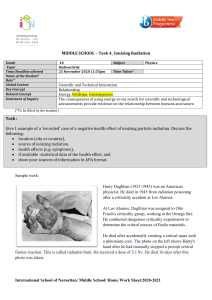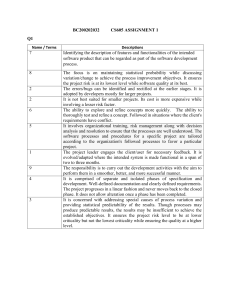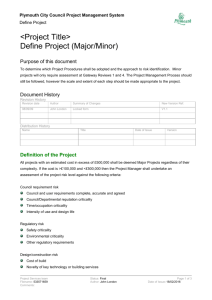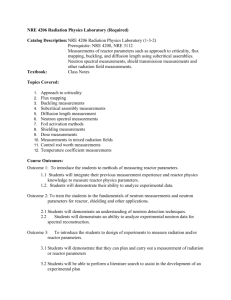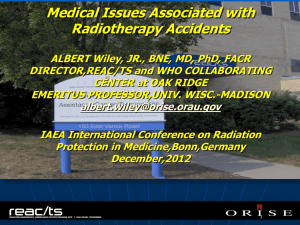Initial Symptoms of Acute Radiation Syndrome in the JCO Criticality
advertisement
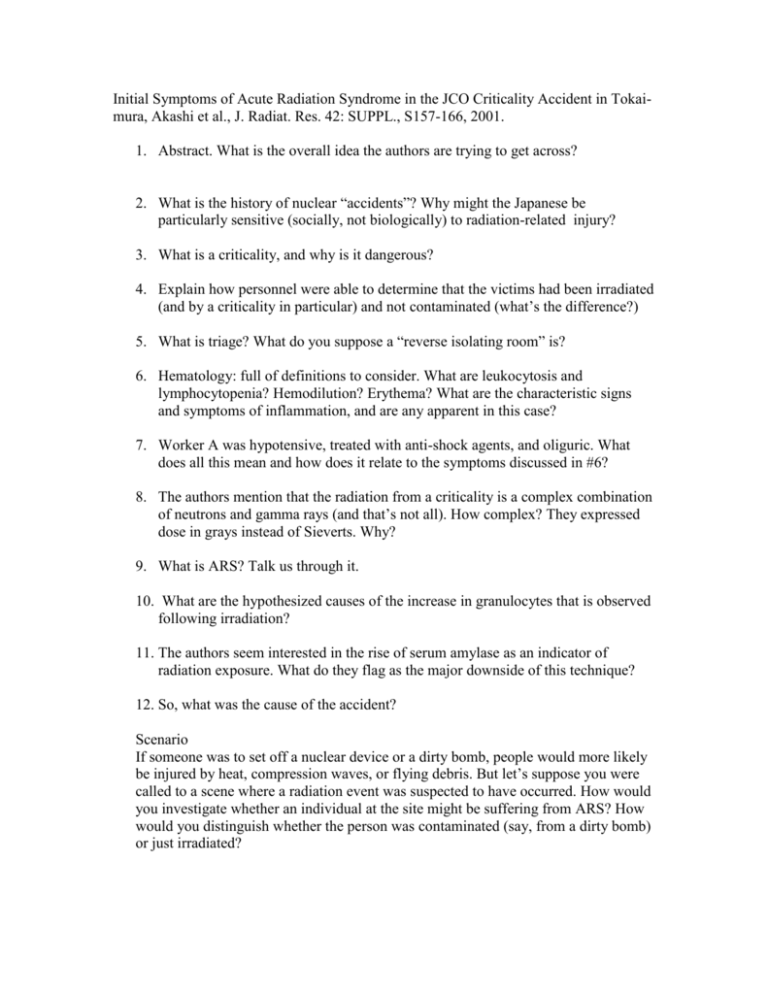
Initial Symptoms of Acute Radiation Syndrome in the JCO Criticality Accident in Tokaimura, Akashi et al., J. Radiat. Res. 42: SUPPL., S157-166, 2001. 1. Abstract. What is the overall idea the authors are trying to get across? 2. What is the history of nuclear “accidents”? Why might the Japanese be particularly sensitive (socially, not biologically) to radiation-related injury? 3. What is a criticality, and why is it dangerous? 4. Explain how personnel were able to determine that the victims had been irradiated (and by a criticality in particular) and not contaminated (what’s the difference?) 5. What is triage? What do you suppose a “reverse isolating room” is? 6. Hematology: full of definitions to consider. What are leukocytosis and lymphocytopenia? Hemodilution? Erythema? What are the characteristic signs and symptoms of inflammation, and are any apparent in this case? 7. Worker A was hypotensive, treated with anti-shock agents, and oliguric. What does all this mean and how does it relate to the symptoms discussed in #6? 8. The authors mention that the radiation from a criticality is a complex combination of neutrons and gamma rays (and that’s not all). How complex? They expressed dose in grays instead of Sieverts. Why? 9. What is ARS? Talk us through it. 10. What are the hypothesized causes of the increase in granulocytes that is observed following irradiation? 11. The authors seem interested in the rise of serum amylase as an indicator of radiation exposure. What do they flag as the major downside of this technique? 12. So, what was the cause of the accident? Scenario If someone was to set off a nuclear device or a dirty bomb, people would more likely be injured by heat, compression waves, or flying debris. But let’s suppose you were called to a scene where a radiation event was suspected to have occurred. How would you investigate whether an individual at the site might be suffering from ARS? How would you distinguish whether the person was contaminated (say, from a dirty bomb) or just irradiated?
